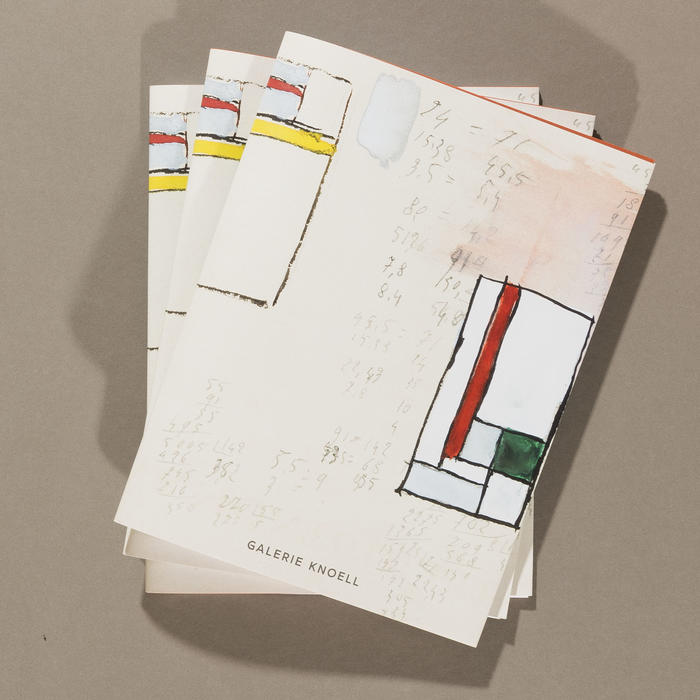Max Bill
1908 — 1994
Max Bill, born 1908 in Winterthur, was a painter, sculptor, graphic artist, architect, art mediator, art journalist and one of the most important representatives of concrete art.
After training as a silversmith, Max Bill moved to the Bauhaus in Dessau in 1927 at the age of 18. There he first came into contact with Josef Albers, who led the preliminary course. "At first Albers had only given the students scissors and paper in the preliminary course. They should fold and cut with it. Albers formulated the task precisely: ‘Strength and construction exercises without waste, with positive and negative movement." Twists and gimmicks resulted in optically complex constructions.
Following the universally humanistic influence of the Bauhaus, Bill sees himself as a holistic designer. As artistic influences, Wassily Kandinsky, Paul Klee, Laszlo Moholy-Nagy and Oskar Schlemmer in particular remain noticeable in his work; but also the Esprit nouveau and the Paris association Abstraction-Création influence Bill's work. "I am of the opinion that it is possible to develop an art largely on the basis of a mathematical way of thinking“. In this short quotation Bill's understanding of concrete art sounds very clear, as he explains in more detail in his essay on "The mathematical way of thinking in the art of our time".
The term 'Concrete Art' was introduced by Theo van Doesburg in 1924 and describes an art that is based on geometric foundations and refers to nothing other than itself. In this sense, concrete works are not to be described as abstractions of an environment, but as pure form. Josef Albers had used the term 'concrete' early on; Max Bill took it up and organized the first international exhibition in 1944, but while Josef Albers was the forerunner, Max Bill can be considered to have completed and realized concrete art.
It becomes clear that both artists deal with the same theme of proportion, colour, composition, and dimension, always trying to determine what exactly could be the epitome of a perfect work of art.
Max Bill was also in charge of the estate of Georges Vantongerloo, held various teaching positions at universities, schools and museums and was also politically active. In 1961 he was elected as a member of the Zurich City Council and six years later he served as National Councillor in the Swiss Parliament for the National Ring of Independents.
Max Bill's works are now represented in the collection of the Kunstmuseum Basel, the Bauhaus Archive in Berlin and the MoMA in New York, among others.
Text quoted after: (shortened)
(Angela Thomas, Mit Subversivem Glanz: Max Bill und seine Zeit, Vol. 1: 1908-1939, Scheidegger & Spiess, 2008, p. 121.)
 dunkler kern, 1962
dunkler kern, 1962  weisses zentrum II, 1966
weisses zentrum II, 1966  feld aus 4 fünfergruppen, 1966
feld aus 4 fünfergruppen, 1966 
